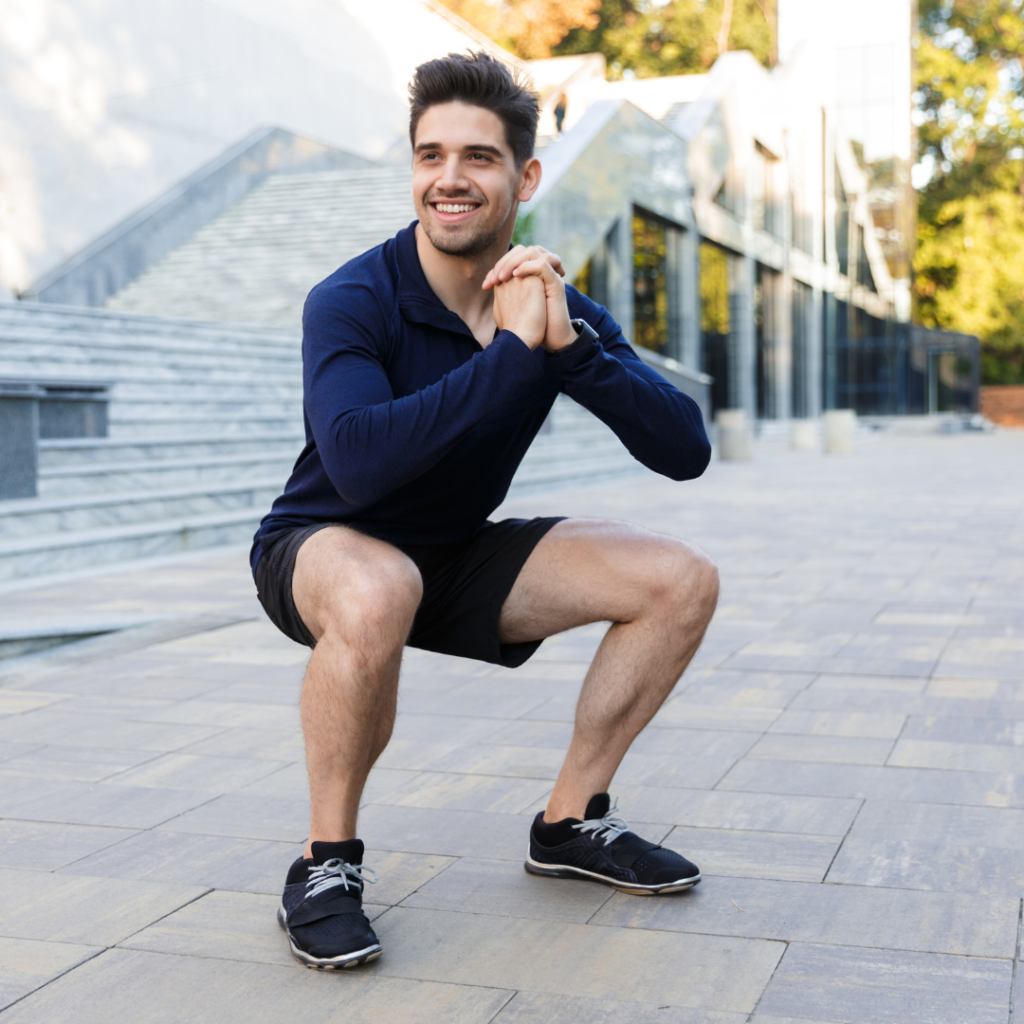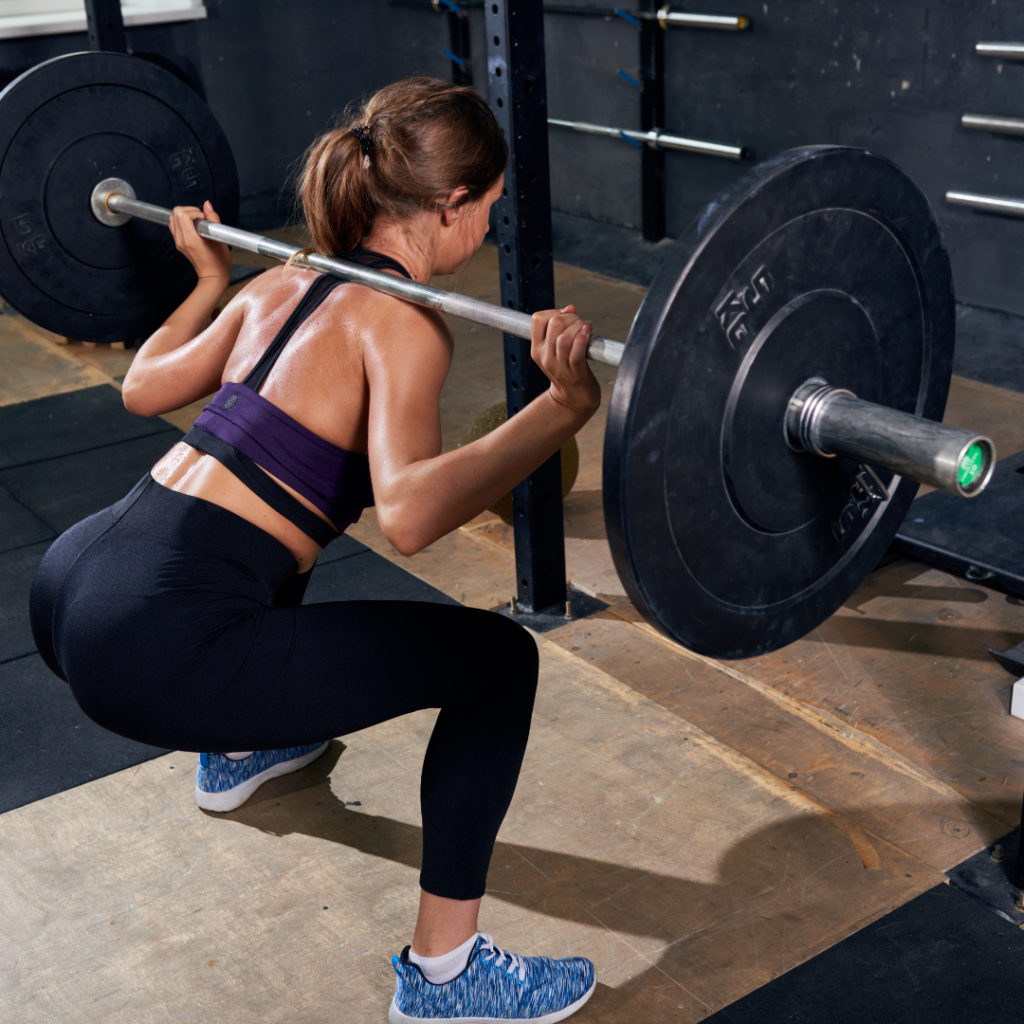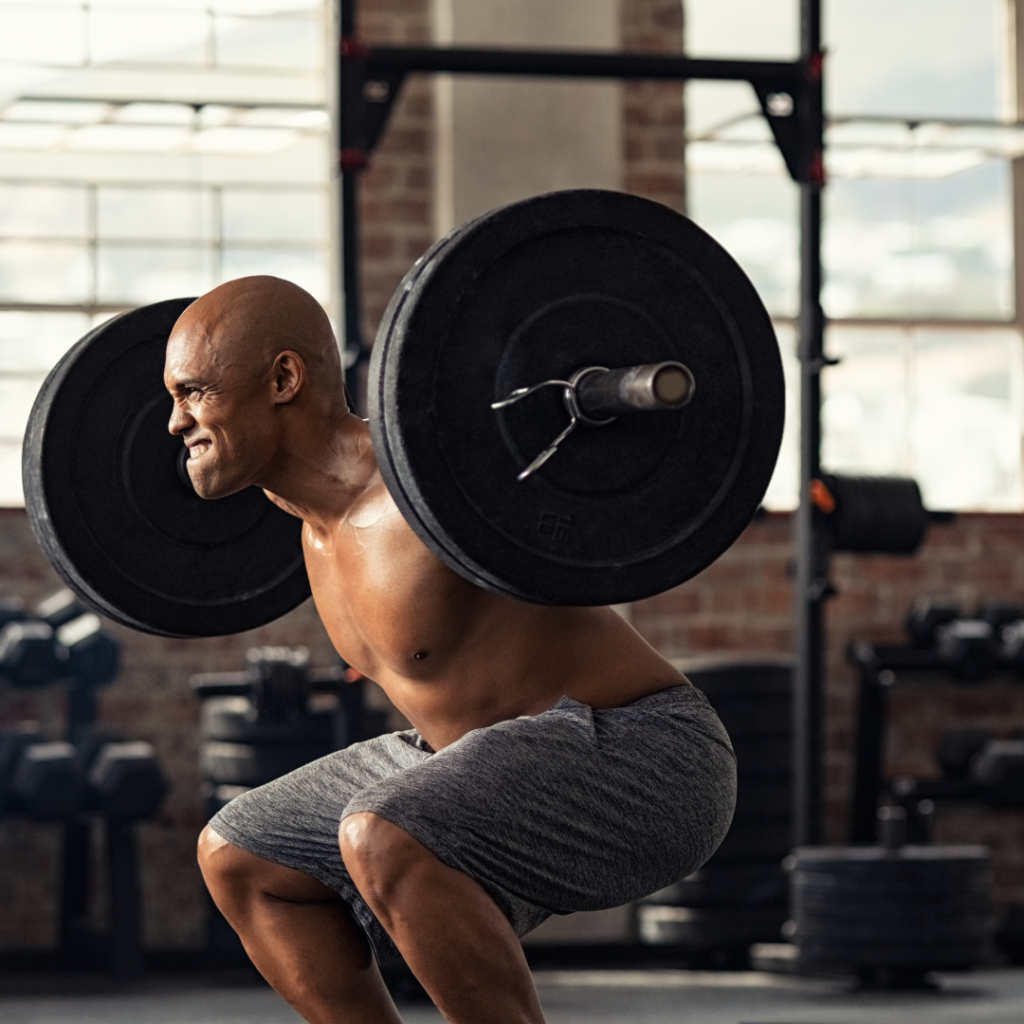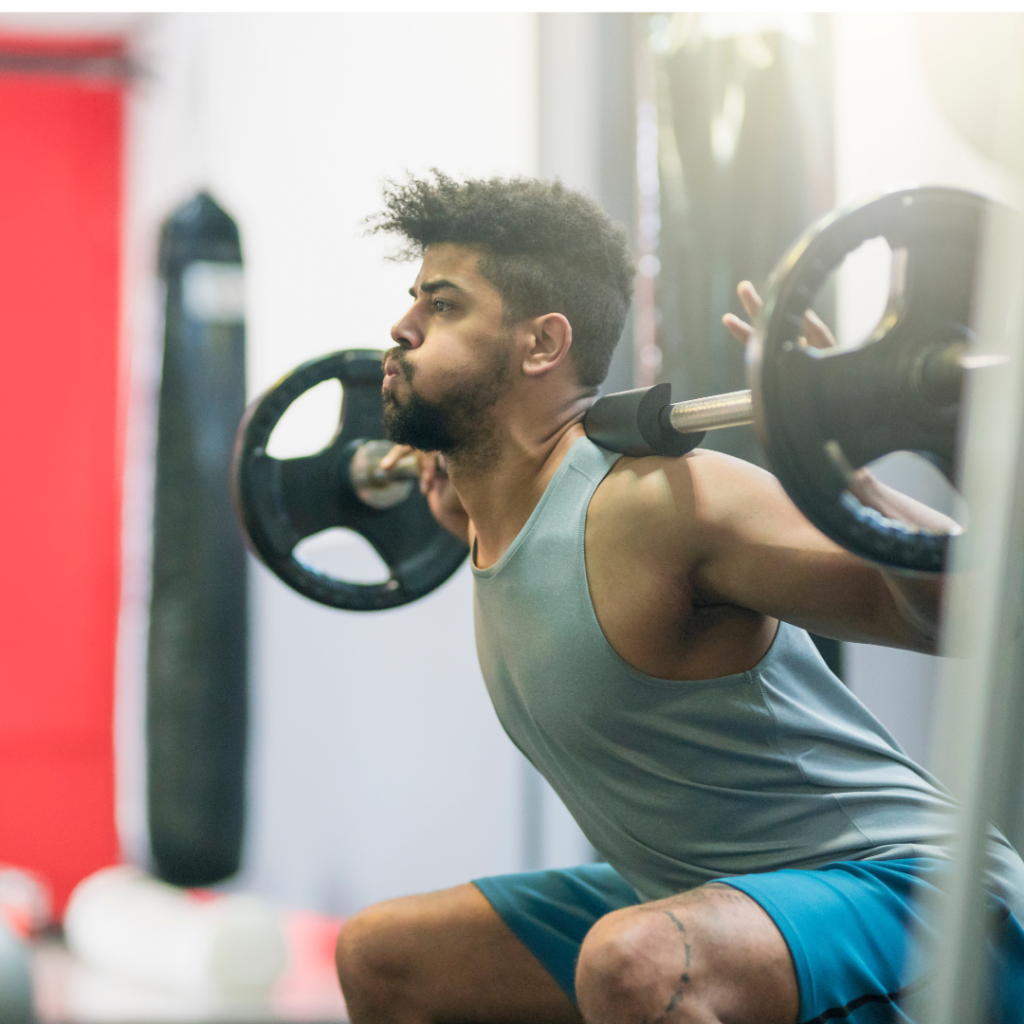From the gym-goers to the competitive weight lifters, squats are often seen as a go-to exercise for strengthening and developing your lower body.
But what muscles do squats work?
If you’re looking to get acquainted with how your body responds when squatting, or if you just want to see which muscle groups deserve an extra round of gratitude during this time of leg day, then our complete guide on which muscles squats work is worthy of some attention!
How To Squat
It’s important to understand the basic mechanics of what a squat is and what it should look like.
When done properly, squats can be extremely beneficial for your entire lower body.
Step 1: Position your feet slightly wider than shoulder-width apart.
Make sure your toes are pointing slightly outward and your heels are in line with each other.
Step 2: While keeping your back straight, bend your knees and lower yourself down as if you were sitting onto a chair.
Keep the weight on your heels as you lower yourself down.
Step 3: Once you have reached a 90 degree angle with the floor, pause briefly at the bottom of the squat before pushing back up through your heels to the starting position.
Step 4: Throughout the entire motion, make sure to keep your chest out and back upright.
Don’t let your knees extend over or past your toes, and keep abs tight throughout the entire movement.
Step 5: When you reach the top of the squat, hold for a brief pause before slowly lowering yourself back into a full squat position again.
Repeat this motion for desired number of reps.
What Muscles Do Squats Work?

Squats are a strength training exercise that primarily works the muscles of the lower body, such as the quadriceps, hamstrings, glutes, and calves.
Squats help to strengthen and tone these larger muscle groups while also targeting smaller stabilizing muscles of the hips and core.
The primary muscle group targeted by squats is the quadriceps or “quads” which are a group of four muscles located on the front of your thighs.
They work together to extend your knees and flex your hips, making them an important part of movement.
Squats focus on strengthening your quads by engaging them throughout each repetition.
The hamstrings are another large muscle group located at the back of your thighs that is involved in knee bending and hip extension.
During a squat, they must contract to stabilize your knee joint and control flexion at the hip so that you can maintain proper form during each rep.
Strengthening your hamstrings with squats will improve balance while helping to reduce risk of injury in other parts of your body like the lower back and hips.
Your glutes (or buttocks) are another major muscle group involved in squats as they help to stabilize your body while you lower into each squat.
The gluteus maximus is responsible for extending your hips when you stand up from a squat position and also helps to keep correct posture throughout each rep.
Squats can also help to develop shapely buttocks when done properly with adequate repetitions over time!
Lastly, squats involve some smaller stabilizing muscles around the hips and core like the:

- adductors
- abductors
- erector spinae (back)
- transverse abdominus (abdominals)
- rectus abdominus (abs)
- obliques(sides)
as well as other deep core muscles like pelvic floor muscles which all play a role in stabilizing your body throughout each rep to ensure proper form is maintained while avoiding injury.
Furthermore they help build strength in these areas which can assist with day-to-day activities such as carrying groceries or playing sports!
Squat Benefits

• Strengthens major muscle groups in the lower body, including glutes, hamstrings, calves and hips: Squats are a great way to strengthen your lower body muscles. They target all of these areas at once, helping you to build strength and tone up.
• Improves balance and posture: Regularly doing squats can improve your overall balance and posture by improving coordination, stability, flexibility and overall strength.
• Burns calories: Squats are an effective exercise for weight loss since they engage multiple muscle groups at once. This makes them more efficient at burning calories and fat than other single-muscle exercises.
• Increases bone density: Squats help to build bone density because they require the use of multiple muscle groups. As bones become stronger with exercise, they can better absorb calcium, which helps protect against osteoporosis as you age.
• Enhances athletic performance: Squats can improve power and endurance when done correctly. This makes them beneficial for athletes who need explosive power or high levels of endurance for their sport.
Tips To Remember

• Always keep your torso upright and chest out during squats: This will help you maintain proper form, reduce the risk of injury, and get more out of the exercise.
• Place feet about shoulder width apart: Placing feet too wide or too narrow can decrease stability and increase the risk of injury.
• Make sure to squat low enough: Squatting too shallow won’t provide maximal benefit from the exercise, so make sure to reach a point where the hips are lower than the knees.
• Maintain tension in your core: A strong core helps improve balance, stability and power when lifting, so having good muscle activation is key for successful squatting.
• Don’t forget to breathe: Proper breathing techniques can help you lift heavy weights with ease by increasing oxygen flow to your muscles. Inhale as you descend into a squat and exhale while standing up.
• Start light and increase weight gradually: Avoiding injury is always important when it comes to weight training, so make sure to start with lighter dumbbells or barbells until you build up strength before moving on to heavier loads.
Squat Variations
Bodyweight Squats
This type of squat is one of the most basic and fundamental exercises, which involves using your body weight to perform a deep squat with proper form and technique.
The goal is to have your thighs parallel to the ground and to keep your back straight throughout the entire movement.
Goblet Squats
An excellent variation of the traditional bodyweight squat, this exercise involves holding a dumbbell or kettlebell in front of you as you perform a deep squat with proper form and technique.
This added resistance will help work your core muscles while also strengthening your legs.
Barbell Squats
This type of squat requires an Olympic barbell be placed on the shoulders, while maintaining good form and technique while performing a deep squat.
Adding weight plates to the bar increases difficulty levels significantly, allowing for more muscle growth and strength gains.
Jump Squats
A great way to increase power production and jump height, these squats are performed with explosive movements that involve pushing off from the floor rapidly before landing back in a lowered position for another rep.
It’s important to keep proper form during this exercise so that joint stress is minimized as much as possible.
Split Squats
Split squats are similar to normal squats but involve having one leg out in front on an elevated surface (such as a step).
The legs switch positions after each rep, working each side equally throughout the set.
This variation allows for significant glute activation during performance due its unilateral nature.
Pistol Squats
A single-leg exercise that requires great balance and stability, pistol squats involve lowering down into a single-leg squat before rising back up again;
Often times though advanced variations such as adding weights or doing pulses at bottom range can be utilized for even further challenge!
FAQs
What are the benefits of squats?
Squats are an excellent exercise for building strength, power, and muscle size in the lower body.
Additionally, squats also improve core stability, balance, and overall body coordination.
What muscles do squats work?
Squats target several major muscles, including the quadriceps, hamstrings, glutes, and calves.
How can I make sure I’m doing a proper squat?
Focus on keeping your back straight throughout the movement and engage your core muscles.
Additionally, ensure that you reach a point where the hips are lower than the knees before rising back up again.
Start with lighter weights until you build up strength before gradually increasing weight for optimal results.
Finally, remember to breathe properly by inhaling during the downward movement and exhaling while standing up.
What are some common mistakes people make when doing squats?
Common mistakes include not engaging the core muscles, arching the back during a squat, leaning too far forward, and not reaching the proper depth.
In order to ensure you are doing a correct squat make sure your feet are hip-width apart, toes pointing slightly outward and begin with lighter weights until you build up strength.
